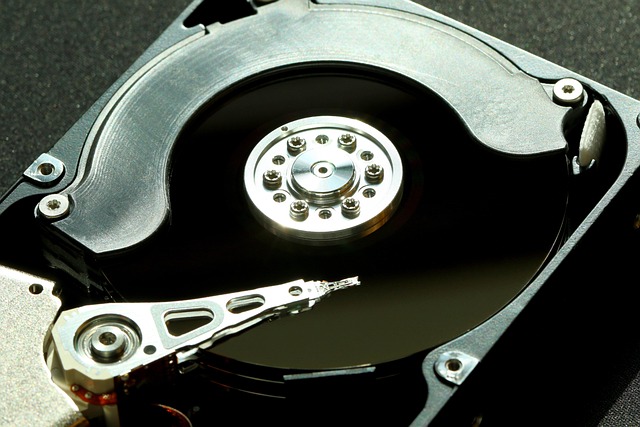Powering the Home: A Deep Dive into Battery Storage Technologies
As our world embraces the transition toward renewable energy, battery storage technologies have emerged as a cornerstone for achieving an efficient, sustainable, and resilient energy ecosystem. With advancements in battery technology, homeowners are now empowered to harness, store, and utilize renewable energy sources like solar and wind power, significantly reducing their carbon footprint and energy bills. This article delves into the various battery storage technologies available today, their functionalities, applications, and the role they play in powering our homes of the future.
The Importance of Battery Storage
The evolution of energy consumption is shifting away from traditional fossil fuel sources toward cleaner, renewable alternatives. However, the intermittent nature of renewable energy generation presents challenges in terms of energy reliability and grid stability. This is where battery storage technologies come into play. Batteries enable households to store excess energy produced during peak production times and deploy that energy during high-demand periods or when production drops.
Storage systems help mitigate several issues, including:
- Energy Reliability: By providing backup energy during outages or periods of low production, batteries enhance residential energy security.
- Cost Savings: With time-of-use billing structures, batteries allow homeowners to store energy when prices are low and consume it during peak pricing hours.
- Reduction of Carbon Footprint: Aligning battery use with renewable energy production leads to decreased reliance on fossil fuels.
- Grid Stability: Distributed energy storage helps balance supply and demand, contributing to overall grid stability.
Types of Battery Storage Technologies
Various battery technologies are available for home energy storage, each with distinct advantages and applications. Understanding these technologies is crucial for homeowners looking to invest in such systems.
Lithium-Ion Batteries
Lithium-ion batteries are currently the most popular choice for residential energy storage due to their high energy density, efficiency, and decreasing costs. These batteries use lithium ions to move between the anode and cathode, enabling high capacity and rapid charging and discharging capabilities.
Key characteristics include:
- High Energy Density: Lithium-ion batteries offer significantly more energy per unit weight compared to other chemistries, making them efficient for home use.
- Long Cycle Life: They typically have a lifespan of 10 to 15 years, depending on usage.
- Scalability: Lithium-ion systems can easily be scaled for larger or smaller applications, fitting various home sizes and energy needs.
- Cost-Effectiveness: Prices have been steadily declining, making lithium-ion batteries more accessible to consumers.
Lead-Acid Batteries
Lead-acid batteries represent some of the oldest battery technologies, known for their robust design and reliability. These batteries utilize lead dioxide and sponge lead as electrodes and are commonly used in off-grid applications.
Despite their advantages, lead-acid batteries also come with some limitations:
- Less Energy Density: They generally have lower energy density compared to lithium-ion batteries, which may require more space for the same amount of stored energy.
- Shorter Lifespan: With a typical lifespan of 3 to 5 years, these batteries require more frequent replacements.
- Maintenance Needs: Some lead-acid batteries require regular maintenance, which can be burdensome for homeowners.
Flow Batteries
Flow batteries are lesser-known but are gaining attention for their unique design and benefits in energy storage. They use two electrolyte solutions, which flow through a cell to generate electricity. This design allows for decoupling of power and energy, meaning the energy capacity can be increased simply by adding more electrolyte.
Advantages of flow batteries include:
- Long Cycle Life: Flow batteries can have lifespans exceeding 20 years, making them a durable option.
- Scalability: They are inherently scalable based on the amount of electrolyte used.
- Low Environmental Impact: Many flow batteries utilize non-toxic materials, minimizing environmental concerns.
Sodium-Ion Batteries
Emerging technologies such as sodium-ion batteries are in development as an alternative to lithium-ion batteries. They utilize sodium ions and have the potential for cost-effective large-scale storage applications because sodium is abundant and inexpensive.
The advantages of sodium-ion batteries make them an exciting prospect:
- Abundant Material: Sodium is cheaper and more plentiful than lithium.
- Reduced Environmental Impact: Sodium-ion batteries promise lower environmental consequences compared to lithium mining.
- Good Performance: They can perform well over a wide temperature range, making them versatile for various climates.
Applications of Battery Storage in Homes
Battery storage systems serve various applications within residential settings, significantly enhancing energy management capabilities. These applications involve a combination of renewable energy integration, energy efficiency improvement, and striving for energy independence.
Integration with Renewable Energy Systems
Battery storage systems are crucial for homes equipped with solar photovoltaic systems. Solar panels generate electricity during the day, which can either be used immediately or stored in batteries for later use. This integration reduces reliance on the grid and allows homeowners to maximize their energy independence and sustainability.
Backup Power Supply
Home battery systems can provide backup power during outages, allowing homeowners to maintain essential daily activities. These systems can automatically switch to battery power when the grid goes down, ensuring that critical devices such as refrigerators, medical equipment, and lighting remain operational.
Energy Management and Load Shifting
Battery storage systems enable homeowners to optimize their energy usage through load shifting, where energy is stored during off-peak hours and used during peak hours, reducing energy costs. Together with smart home technology, these systems can contribute to more efficient power usage, resulting in lower utility bills and reduced strain on the grid.
Challenges Facing Battery Storage Adoption
Despite the many advantages, several challenges hinder the widespread adoption of residential battery storage technologies. Understanding these hurdles can help consumers and stakeholders plan strategies for mitigating them.
Initial Investment Costs
The upfront costs for battery storage systems can be significant. Although prices for technologies like lithium-ion batteries continue to decline, initial investments may still be prohibitively high for many homeowners. Financial incentives, subsidies, and innovative financing options can help mitigate these costs.
Regulatory and Policy Barriers
The regulatory landscape for residential energy storage varies greatly from region to region. Inconsistent policies regarding net metering, interconnection, and incentives can deter potential adopters. Addressing these regulatory hurdles is essential to foster a supportive environment for battery adoption.
Battery Recycling and Environmental Concerns
While batteries offer considerable environmental benefits in reducing reliance on fossil fuels, concerns remain regarding their production and end-of-life management. Recycling programs must be developed to address the disposal and recycling of batteries to minimize their impact on the environment.
The Future of Home Battery Storage
The future of battery storage technology looks promising, driven by continued innovation and investment in research and development. As the demand for clean energy solutions grows, the pace of technological advancement in the battery storage industry is expected to accelerate. Here are some of the potential developments that may shape the future landscape:
Advancements in Energy Density and Efficiency
Research is ongoing to develop batteries with higher energy density, which will enable smaller and lighter designs while storing more energy. Advancements in materials science, particularly solid-state battery technology, may lead to breakthroughs in energy storage capabilities.
Integration with Smart Home Technology
The growth of the Internet of Things (IoT) and smart home technologies positions battery storage systems to become even more integrated into home energy management. Smart systems will optimize energy flow, automate device management, and ensure the most efficient use of stored energy.
Decentralized Energy Systems
As battery storage technologies become more widespread, decentralized energy systems will become increasingly common. Homeowners will have the ability to become prosumers, generating and storing energy locally, leading to enhanced energy independence and resilience.
Conclusion
Battery storage technologies are fundamentally transforming how we think about energy consumption and generation in our homes. As the residential landscape evolves towards sustainability, energy storage will play a pivotal role in fostering both energy independence and efficiency. As technological advancements continue to unfold, battery storage will not only become more accessible but will also integrate seamlessly into the fabric of our energy systems, ultimately powering our homes more sustainably and reliably than ever before.



